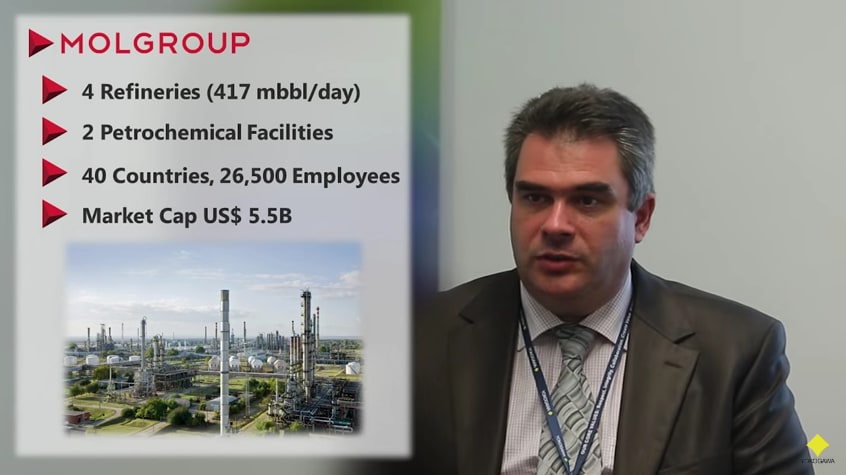What are Tunable Diode Laser Spectrometers (TDLS)?
 Optimize combustion, increase throughput, reduce emissions, and increase safety
Optimize combustion, increase throughput, reduce emissions, and increase safety
The TruePeak Tunable Diode Laser Spectrometers (TDLS) operate by measuring the amount of laser light that is absorbed as it travels through the gas being measured. The TDLS line offers measurements for process gas, flue gas, impurity analysis, custody transfer, safety, with in-situ and extractive methods supported. By utilizing no sensor contact with the process and no moving parts, it leads to a high mean time between failures (MTBF) and hence a low long-term cost of ownership (LTCO).
-
In-Situ Gas Analyzer TDLS8000
Yokogawa’s new TDLS8000 houses all of the industry’s leading features in one robust device. The platform design is for in situ measurements which negates the need for sample extraction and conditioning.
-
Probe Style Tunable Diode Laser Spectrometer TDLS8100/TDLS8200
The TDLS Probe brings all the industry leading combustion features into a single-flange explosion-proof device for measuring oxygen, CO, and methane.
Details
What is a Tunable Diode Laser Spectrometer?
A TDL laser spectrometer operates on a fairly simple tunable laser principle. To determine gas concentration, TDLS uses lenses to measure how much light gets lost while traveling through gas.
In-Situ Measurement Allows for Quick Analyzer Response
Tunable diode laser spectrometers (TDLS) allow for real-time gas analysis that leads to increased efficiency, safety, throughput, quality, and environmental compliance. The non-contacting sensor allows measurements in the most severe conditions, such as high temperature, high pressure, corrosive/abrasive conditions, and high dust loading. This in-situ analyzer eliminates the need for sample handling and extraction and reduces the need for routine maintenance and calibration.

Improved OPEX and Safety
The TDLS8000 is attracting considerable attention from many refinery and petrochemical plants because it requires little maintenance and can measure the concentrations of O2 and CO/CH4 in the radiant section of large-scale combustion furnaces and process heaters in near real-time. This allows an unprecedented opportunity to optimize combustion efficiency leading to increased throughput, reduced emissions, and increased overall asset safety.
What are the Key Benefits of Tunable Diode Laser Analyzer Measurements?

"I just want to make sure that there are no major incidents that occur." "I need to make sure that we meet regulation standards." |
Key BenefitIndustry best practices and standards acknowledge TDLS as the technology required for safe and environmentally responsible combustion applications.
|
Key Benefit
|
"I need to make sure that all the PMs get done in an 8hr day without any surprises." "I need to minimize the maintenance turnaround times." |
|
"I need to be able to chat with a specialist about detailed questions." "Getting quotes even for simple products is time-consuming when I have to take time out of my already packed day to follow on status." |
Key Benefit
|
Key Benefit
|
"We use old technology because we can't seem to justify the upgrade." "I am concerned with the plant engineering resources utilized to make modifications or maintain the systems. There just is not enough people." |
Industrial Applications of a Tunable Diode Laser Absorption Spectrometer
The TDLS8000 tunable diode laser spectrometer has the following measurement applications:
- Oxygen concentration in oil refinery hydrocarbon vapors
- Oxygen concentration control with ethylene oxide reactors
- Oxygen concentration in tank headspace gas
Resources
Electrolysis plants create hydrogen and chlorine from a brine solution. Chlorine gas generated from the anolyte of the electrolysis tank generally contains between 0.5 to 2.0 vol% H2O. The sample is then cooled and filtered to remove brine, subsequently coming out as wet chlorine gas. The wet gas is sent to a drying tower where it is treated with sulfuric acid to get moisture down to the ppm level.
In maintaining and managing industrial plants, monitoring waste water pH/ORP is both a legal obligation and an unavoidable necessity for protecting the environment. Monitoring without an attentive eye can lead to severe consequences.
Considering safety and environmental issues such as combustion efficiency and decreasing NOX and CO in exhaust gas, it has become important to control O2 concentration in garbage incineration processes.
In recent years, shale gas extraction technology has made rapid progress, inducing a shale gas revolution mainly in the USA. Thus, the need for analysis of hydrocarbon gases, including natural gas, is expected to grow rapidly. Traditionally gas chromatography has been used for the analysis of hydrocarbon gases; it can accurately measure the concentration of each hydrocarbon component in a sample of natural gas.
Tunable diode laser analyzers optimize combustion through direct measurement of O2, CO and methane.
Spectrometric technology can assess many critical characteristics about products, but it has limits. It can be challenging to determine when the line has been crossed
SABIC Turns to Yokogawa TDLS Analyzers to Enhance Safety Functions and Production
With fired heaters, users hope to get greater efficiency and reduced emissions but often are disappointed. Given the number of fired heaters operating every day and their importance in the process industries, any improvements realized across the board will have huge impacts. More units can reach their potential with some simple changes in work practices and technology upgrades.
The EPA rule, 40 CFR 63 Subparts CC and UUU, is forcing refineries to monitor flares. Fortunately, modern analyzer technology makes it possible to meet the requirements, generate the necessary reports, and stay in compliance.
Here’s how to select the right analyzer to meet these demands.
Downloads
Instruction Manuals
General Specifications
Technical Information
Certificates
- Exida FMEDA SIL Report (257 KB)
- Exida FMEDA SIL Report (258 KB)
Engineering Tools
- IF8000 Isolation Flange for TDLS8000 (151 KB)
Videos
Yokogawa Advanced Solutions recently sat down with László Cserna, Senior Project Manager at MOL Group where together we recently implemented the Yokogawa CombustionONE Furnace Optimisation Solution.
Looking for more information on our people, technology and solutions?
Contact Us












